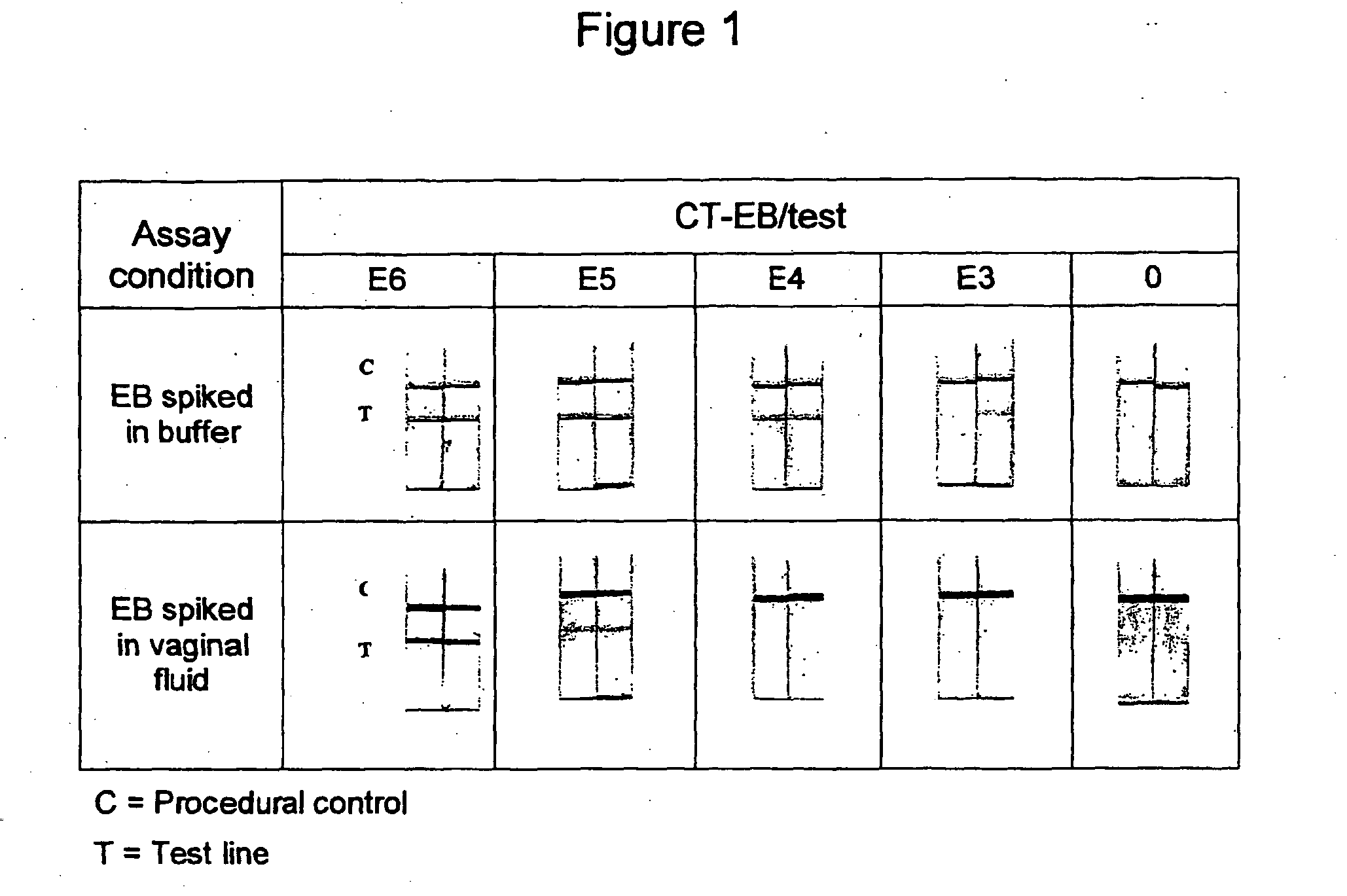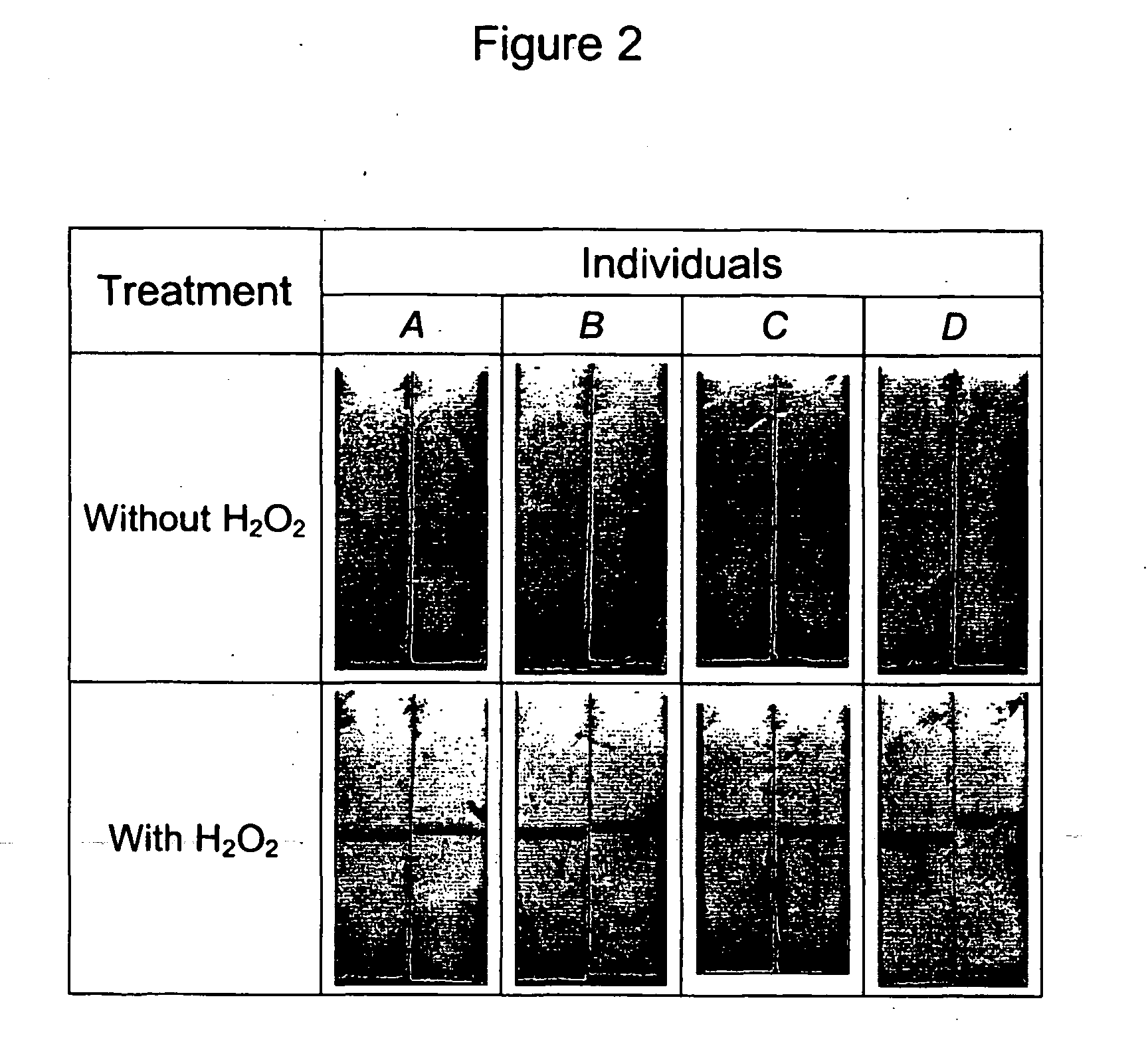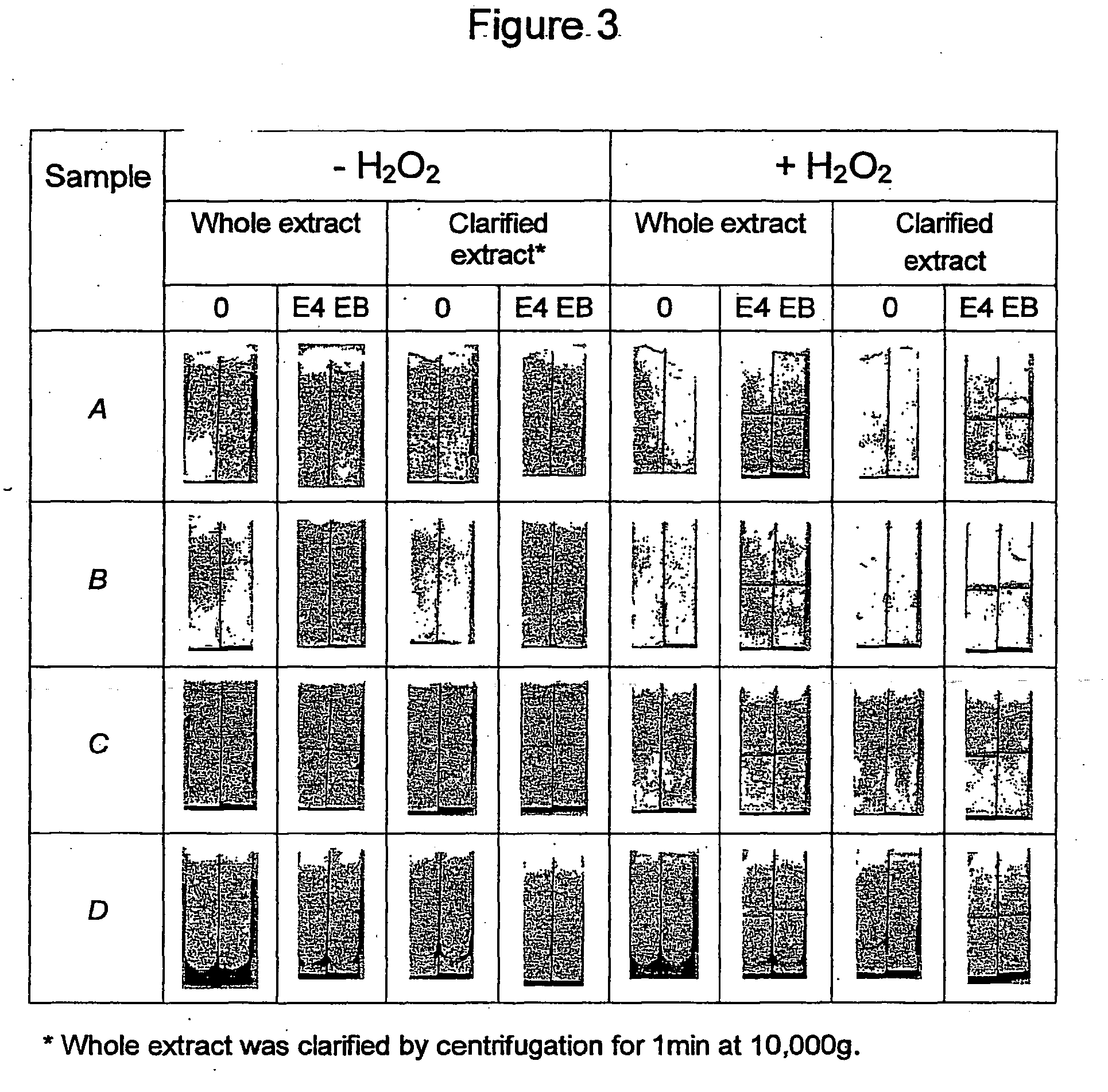Sample preparation for the detection of infectious agents
a technology for infectious agents and sample preparations, applied in the field of sample preparations for the detection of infectious agents, can solve the problems of unreliable results or failure to work at all when applied to real patient samples, nuclease treatment did not improve the fluorescent staining of gonococci in a fluorescent antibody test, and no disclosure of clinical samples for testing, etc., to achieve the effect of reducing or inhibiting liquid flow
- Summary
- Abstract
- Description
- Claims
- Application Information
AI Technical Summary
Benefits of technology
Problems solved by technology
Method used
Image
Examples
Embodiment Construction
:
Vaginal Swab Samples
[0028] 1. Use either a polyurethane or polyester (e.g. Dacron) swab (on a polystyrene or polypropylene plastic shaft) to collect the vaginal sample. Tampons and sanitary napkins may also be used for sample collection. [0029] 2. The swab should be inserted preferably 6 cm (3 cm to 9 cm) deep from the opening of the vagina and rotated several times for at least 10 seconds before removal. [0030] 3. The sample can either be stored dry or in sample collection buffer at 2-8° C. for 2-4 days before testing.
1. Use of DNase to degrade nucleic acids present
[0031] Some vaginal swab samples contain large amounts of DNA which forms a gel-like matrix that tend to retain fluid, clog the nitrocellulose membrane and inhibit the migration of reagents, and results in a total failure of the test. Digestion of the DNA with DNase prevents the above from happening. DNase is effective when added at more than 0.5 jig / ml or 1.5 units of activity...
PUM
| Property | Measurement | Unit |
|---|---|---|
| Fraction | aaaaa | aaaaa |
| Fraction | aaaaa | aaaaa |
| Fraction | aaaaa | aaaaa |
Abstract
Description
Claims
Application Information
 Login to View More
Login to View More - R&D
- Intellectual Property
- Life Sciences
- Materials
- Tech Scout
- Unparalleled Data Quality
- Higher Quality Content
- 60% Fewer Hallucinations
Browse by: Latest US Patents, China's latest patents, Technical Efficacy Thesaurus, Application Domain, Technology Topic, Popular Technical Reports.
© 2025 PatSnap. All rights reserved.Legal|Privacy policy|Modern Slavery Act Transparency Statement|Sitemap|About US| Contact US: help@patsnap.com



